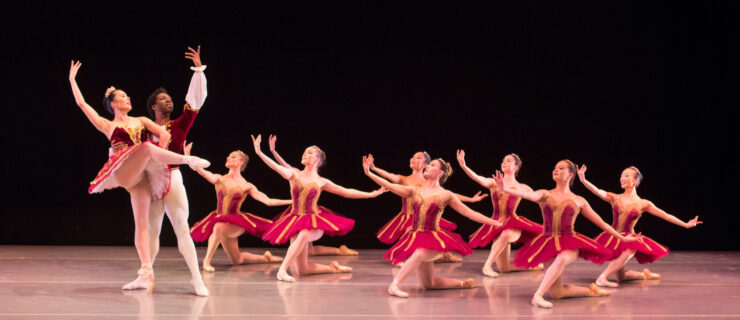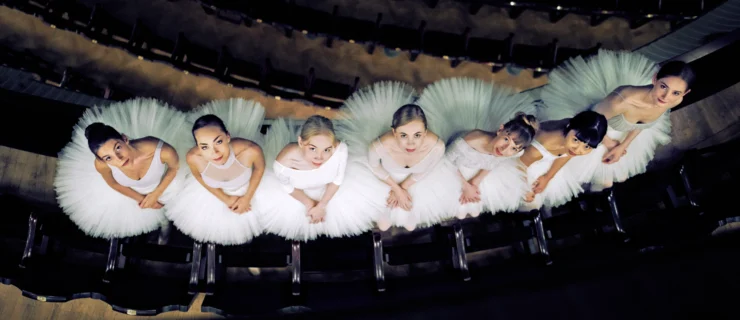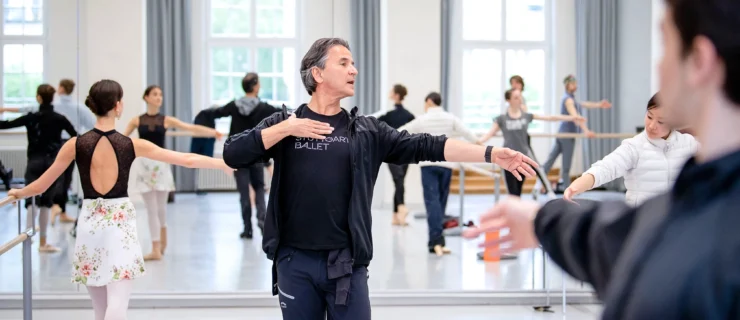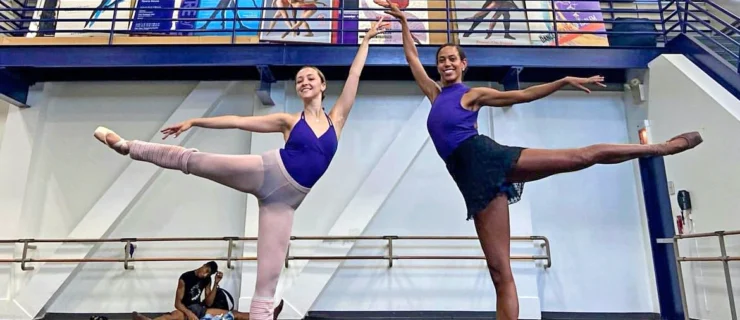So, You Want To Be A Freelancer?
A few years ago, I was sitting on a bus during my first tour with The Suzanne Farrell Ballet, trying to decide what to do after our brief season ended. I had lost my contract with a full-time company the previous spring. I wanted to keep dancing with TSFB, but the contracts were short and I had an empty spring ahead of me. How could I make this work? As I watched the landscape rush by, I considered a new kind of career: one that involved working closely with emerging choreographers, traveling extensively, making my own schedule—and zero stability. A few months later, I swallowed hard, packed some boxes and moved to New York City, ready to start my new life as a freelancer.
Why freelance? Sometimes it’s a necessity, the next best thing for dancers struggling to find a full-time company position. Others freelance for deeper artistic fulfillment. “I didn’t want a corporation running my artistic experience,” says Frances Chiaverini, who has danced for Morphoses, Shen Wei Dance Arts, the Metropolitan Opera, Adam Barruch, Shannon Gillen and in Black Swan. She struck out on her own after two years with Nederlands Dans Theater 2. Matthew Prescott left The Joffrey Ballet in search of new experiences, and found that freelancing suited his temperament. “I get restless easily,” he says. “I need more than the same thing day in, day out.” He’s since danced with companies all over the country, including Alonzo King’s LINES Ballet, Complexions, Dominic Walsh Dance Theater, Morphoses, Alabama Ballet, BalletX, The Suzanne Farrell Ballet and Armitage Gone! Dance. (It’s worth noting, by the way, if some of these companies are on your dream list, you will probably be freelancing between seasons, since few offer extended contracts.)
Sound appealing? Brace yourself: Freelancing is not for the faint of heart. If you’re considering taking the plunge, look at the realities first. It may not be right for you, or it may be the best step you’ve ever taken.
Footing the Bill
Keep in mind that as an independent contractor, you no longer qualify for unemployment benefits, a safety net many full-time company dancers use during layoff periods. Plus, even when you are working, your income will be wildly inconsistent. Health insurance presents another challenge. Unless you’re under 26 and can remain on your parents’ policy, you’ll have to purchase your own or go without. (I belong to Freelancers Union, which offers affordable rates for PPO plans, but you need a certain amount of freelance work to qualify.) And you’ll be constantly on the lookout for your next project. “There’s no security in terms of when the next paycheck’s going to come,” says Prescott. “That was one of the hardest things I had to learn to deal with. You’re really on your own.”
To help pay the bills, freelancers usually need to take part-time non-dance jobs. One of my early mistakes was taking a low-wage job behind the counter of a restaurant. I worked long hours for little money and had zero time to audition. Higher-paying jobs that offer more scheduling flexibility are the way to go. They’re out there, but it can take a while to find the right one. Many freelancers teach at local dance, yoga and Pilates studios. Others bartend or waitress a few shifts a week. I once worked as an evening receptionist for a physical therapist. While side jobs can be stressful, they also serve as opportunities to explore other interests and develop new skills.
The Business of Being Your Own Boss
Taking charge of your career means proactively searching for dance jobs and marketing yourself. “I spend as much time on my computer—making reels, sending out DVDs, updating my resumé—as I do in the studio,” says Prescott. Studios usually post audition notices, but it also helps to check company websites or audition sites like dance.net.
But it’s just as important to get out there and network. That means taking class at popular studios, meeting other dancers, talking to teachers and seeing performances. Workshops and master classes provide excellent opportunities to meet choreographers and explore their styles. “I hear about things through friends,” says freelancer Kelsey Coventry, who counts Complexions, BalletX, Avi Scher & Dancers, the Cincinnati Opera and Neglia Ballet Artists among the companies for which she’s danced. “For instance, a friend might be unavailable for a gig, so she’ll recommend me. Sometimes it’s just about timing, being lucky.” You never know—I was once offered a job after an artistic director spotted me taking class at Steps on Broadway.
Social media helps, too. Coventry landed an audition for West Side Story and nailed a spot on the international tour after a casting director contacted her through Facebook. “I keep my page pretty professional,” she says. “I normally use a dance picture for my profile.”
Gigs vary dramatically, and freelancers must be prepared for big financial fluctuations. While some contracts include a weekly salary, others offer hourly wages or a performance fee at the end of the run. Pointe shoes aren’t always provided. Some directors don’t compensate for rehearsal time—and some don’t pay at all. Take a hard look at the numbers for each contract: If you’re getting paid hourly, how many hours a week can you expect to work? Do you have enough money to tide you over if you will not get paid until the end? Is the artistic quality of the work worth little or no payment? “I’ve learned to ask for things in writing and for a pay schedule,” says Chiaverini. “Then I hope they stick to their word.”
Free class is a rare bonus that presents a frustrating catch-22: Without steady work, it’s hard to afford class, but without class, it’s hard to stay in shape for auditions. Prescott makes class a top priority, sacrificing elsewhere if necessary. “Class has to be maintained,” he says. “If that means not paying for a gym membership, fine.” Luckily, many studios offer work-study programs where dancers can volunteer administrative services in exchange for classes.
The Artistic Payoff
Despite the hardships, freelancing offers dancers the freedom to explore different sides of themselves. I applied for an internship at Dance Magazine during a particularly slow spring, which led to further writing opportunities and, eventually, my own column in Pointe. Coventry has worked in commercial hip hop and as a television extra while pursuing a college degree. “If I were in a company, I wouldn’t be able to do all those things,” she says.
The artistic benefits can be equally rewarding. “For me to stay interested in my work, it needs to be something that I really want to be invested in,” says Chiaverini. “I don’t look at it as a job, but as a chance to curate my own personal repertoire.” For Prescott, it’s been a way to develop life skills and strengths. “Freelancing has kept me engaged in my career rather than settling into a routine,” he says. “I’ve learned a lot of survival skills. It feels very empowering.”
I still make less money than I did when I danced in a full-time company. But I’ve patched together a multifaceted career ranging from intimate collaborations with choreographers like Deborah Lohse and John-Mark Owen to large-scale Balanchine ballets at the Kennedy Center. And I’ve seen more cities and met more people than I ever could have if I’d stayed in one place. Whether you want to or have to, successful freelancing is possible—you just need to be willing to take the reins.





